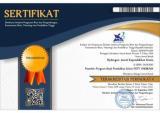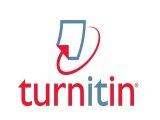PERBANDINGAN VOLUME DAN MASSA NUTRIEN OPTIMUM PADA KARAKTERISTIK KIMIA NATA DE LERI DARI LIMBAH AIR CUCIAN BERAS
DOI:
https://doi.org/10.33394/hjkk.v4i1.43Keywords:
Rice Waste Water, Sugar and Tofu Waste Water, Nata de LeriAbstract
In the processing of rice into the rice used is rice that has been whased away, while the rice water thrown away because it was considered important that the rice water that is not used will be waste, it is necessary alternative in their utilization. The alternative is to make a food product by a fermentation process using bacteria Acetobacterxylinum called nata de leri. It is caused rice water contain nutrients such as carbohydrates, protein, and vitamin B1 or thiamine. This study aimed to compare the volume and optimum mass of nutrients at chemical characteristicts of nata de leri generated. This type of research was Pre-Experimental by varying nutrient source used was suger as a carbon source and tofu waste water as a source of nitrogen. In this research, was adding four variations of nutrient source that has been 100:25 (g/mL), 125:50 (g/mL), 150:75 (g/mL), 175:100 (g/mL). Furthermore, the analisisproksimat include moisture content, ash content, fat content, protein content, and carbohydrate content. Best treatment combination was obtained on the addition of nutrient source 125:50 (g/mL) which generate 78,7217% moisture content, ash content of 1,0707%, fat content of 0,5636%, protein content of 0,4776% and the carbohydrate content 19,1893%.
References
Badan Standardisasi Nasional. 1992. Cara Uji Makanan dan Minuman. SNI01-2891-1992. Balai Penelitian dan Pengembangan Indonesia, Jakarta.
Darmansyah. 2010. Evaluasi SifatAnalisis. Fakultas Teknik Universitas Indonesia.
Herawaty. N., dkk. 2015. Kajian Variasi Konsentrasi Sukrosaterhadap Karakteristik Nata Timun Suri(Cucumis sativus L.). Jurnal Agritepa Vol. II, No.1. 2015.
Hidayatullah Rahmat. 2012. Pemanfaatan Limbah Air Cucian Beras Sebagai Substrat Pembuatan Nata De Leri Dengan Penambahan Kadar Gula Pasir Dan Starter Berbedaâ€. Skripsi. Universitas Islam Negeri Sunan Kalijaga Yogyakarta.
Layudha Siti Iqlima, dkk. 2015. “Pengaruh Penambahan Gliserol Terhadap Kualitas Bioplastik Dari Limbah Air Cucian Berasâ€. Prosiding SNST ke_6: Fakultas Teknik Uneversitas Hasyim Semarang.
Manoi Feri, 2007. “Penambahan Ekstrak Ampas Nanas Sebagai Medium Campuran Pada Pembuatan Nata De Cashewâ€. Jurnal Bul. Litro. Vol. XVIII. No.2. 2007 107-116.
Mulyani, M.E., dkk. 2010. Analisis Proksimat Beras Merah (Oryza sativa) Varietas Slegren dan Aek Sibundong. Jurusan Kimia. Fakultas Matematika dan Ilmu Pengetahuan Alam. Institut Teknologi Sepuluh November.
Pambayun, R, 2002, Teknologi Pengolahan Nata De Coco, Yogyakarta, Kanisius.
Ramadhani. G. A., dkk. 2012. Analisis Proximat, Antioksidan dan Kesukaan Sereal Makanan Dari Bahan Dasar Tepung Jagung (Zea mays L.) dan Tepung Labu Kuning (Cucurbita moschata Durch). Buletin Anatomi dan Fisiologi. Volume XX, No. 2.Oktober 2012.
Tamimi Andra, dkk. 2015. “Pengaruh Penambahan Sukrosa Dan Urea terhadap Karakteristik Nata De Soya Asam Jeruk Nipisâ€. Jurnal Bioproses Komoditas Tropis Vol.3 No.1, 2015.
Tari. I. N., dkk. 2010. “Pembuatan Nata de Coco : Tinjauan Sumber Nitrogen terhadap Sifat Fisiko-Kimianyaâ€. Jurnal Widyatama. Volume XIX, No.2. 2010
Tim Analisisi Laboratorium INMT. 2015. Penuntun Analsisis Proximat. Fakultas Peternakan UNRAM.
Widya, I.W. 1984. MempelajariPengaruhPenambahan Skim Milk Kelapa, JenisGula Dan Mineral DenganBerbagaiKonsentrasiPadaPembuatanNata De Coco. (Skripsi). FakultasTeknologiPertanian. IPB. Bogor.
Downloads
Published
How to Cite
Issue
Section
Citation Check
License
License and Publishing Agreement
In submitting the manuscript to the journal, the authors certify that:
- They are authorized by their co-authors to enter into these arrangements.
- The work described has not been formally published before, except in the form of an abstract or as part of a published lecture, review, thesis, or overlay journal.
- That it is not under consideration for publication elsewhere,
- That its publication has been approved by all the author(s) and by the responsible authorities – tacitly or explicitly – of the institutes where the work has been carried out.
- They secure the right to reproduce any material that has already been published or copyrighted elsewhere.
- They agree to the following license and publishing agreement.
Copyright
Authors who publish with Hydrogen: Jurnal Kependidikan Kimia agree to the following terms:
- Authors retain copyright and grant the journal right of first publication with the work simultaneously licensed under a Creative Commons Attribution License (CC BY-SA 4.0) that allows others to share the work with an acknowledgment of the work's authorship and initial publication in this journal.Â
- Authors are able to enter into separate, additional contractual arrangements for the non-exclusive distribution of the journal's published version of the work (e.g., post it to an institutional repository or publish it in a book), with an acknowledgment of its initial publication in this journal.
- Authors are permitted and encouraged to post their work online (e.g., in institutional repositories or on their website) prior to and during the submission process, as it can lead to productive exchanges, as well as earlier and greater citation of published work.
Licensing for Data Publication
Hydrogen: Jurnal Kependidikan Kimia uses a variety of waivers and licenses, that are specifically designed for and appropriate for the treatment of data: Open Data Commons Attribution License, http://www.opendatacommons.org/licenses/by/1.0/ (default) Other data publishing licenses may be allowed as exceptions (subject to approval by the editor on a case-by-case basis) and should be justified with a written statement from the author, which will be published with the article.








